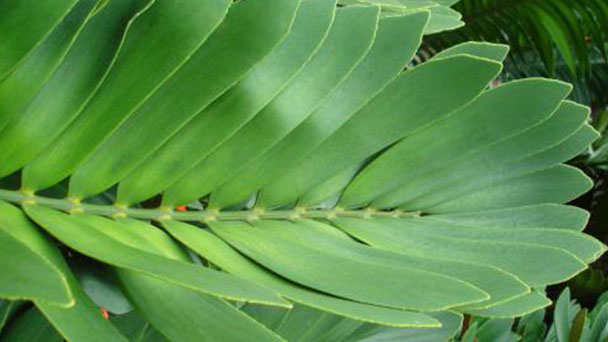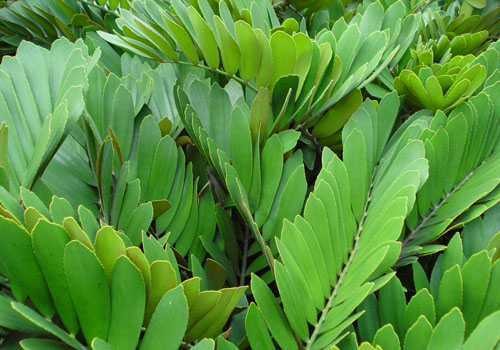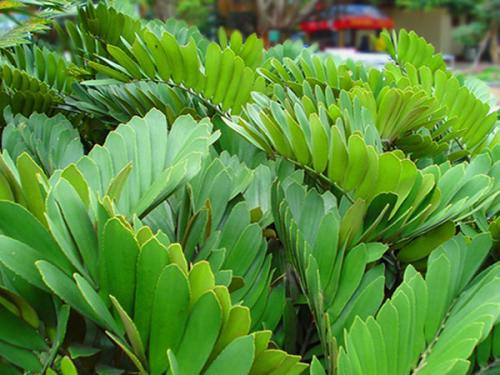Cardboard Palm (Zamia furfuracea) Care Instructions
Written by Maggie
Oct 14 2021

Cardboard palm is an evergreen tree with a small plant size and strong adaptability, which makes it suitable for home pot farming. How to grow and care for Cardboard Palm? Next, we will introduce growing Cardboard palm care.
Cardboard Palm Soil Care
Cardboard Palm likes fertile, loose, sandy soil. When we grow and care for Cardboard palm, the family can use garden soil: leaf rot soil: sand = 6:2:3 or mud spot soil: leaf rot soil: sand = 4:3:3.
Cardboard Palm Temperature Care
Cardboard palm likes wet soil, which is resistant to drought and waterlogging. When we grow and care for Cardboard palm, the suitable temperature for growth is 20-30℃, and it is not resistant to low temperature. It can be safely overwintered in winter when the temperature is above 5℃. When the temperature rises in spring, the soil should be kept moist. Summer growth period, in addition to watering, sprinkle water 2-3 times a day, keep the leaves green. In late autumn, winter and early spring, when the temperature is low (below 10℃), the basin soil should be kept dry to facilitate its overwintering.
Cardboard Palm Fertilizer Care
Cardboard palm grows slowly and does not require much fertilizer. When we grow and care for cardboard palm in late autumn, winter and early spring, fertilization is not allowed. After the temperature rises in spring, topdressing can be started. After 5 times of decompose liquid fertilizer is chased once every 1 month, or 1000 times of "Hua Duo Duo" general fertilizer is applied once a month.
Cardboard Palm Light Requirements
When we grow and care for Cardboard palm, it should be conserved in half shade to avoid strong light exposure, otherwise it will make the leaf color yellow and lose luster. Cardboard palm should be replaced once every 2 years. When new pinnate compound leaves grow for 2 rounds, the base leaves tend to age and turn yellow, so they should be cut off one by one. In the perennial old stem of the base of the stem, often germination buds, if not for reproduction, should be cut in time.

Cardboard Palm Disease & Insect Control
Cardboard palm often has leaf spot damage, which can be sprayed with 50% carbendazim WP 1000 times liquid. Pests include scale worms and root-knot nematodes. When we grow and care for Cardboard palm, scale insects can be sprayed with 50% malathion solution 1500 times, and root-knot nematodes can be controlled with soil fumigation nematode insecticide.
Cardboard Palm Repotting
Growing cardboard palms from seed are especially difficult. When we grow and care for Cardboard palm, it's recommended to select a nursery plant for a pot. Pick a sturdy pot with ample drainage holes that's slightly larger than your plant's root ball. And plant the cardboard palm in quality potting mix.
Cardboard palm doesn't like to have its roots most frequently. When we grow and care for Cardboard palm, only repot once the roots have outgrown the container and are poking out of it. This will typically occur every two to three years until the plant has reached its maximum size. Select one pot size Up, brushing off the Cardboard palm from its old container, and replant it in the new one with the fresh potting mix at the same depth it was planted before.
Cardboard Palm Toxicity
All parts of the Cardboard palm, including its seeds, are highly toxic to both people and animals when ingested. So it is best kept away from kids and pets. Just a couple of seeds can be a fatal dose, especially in children and small animals.
Symptoms of Cardboard palm toxicity in both people and animals include dehydration, increased thirst, vomiting (possibly with blood), diarrhea, dark stools, jaundice, bruising, paralysis, And liver and kidney failure. Contact a medical professional as soon as possible if you suspect poisoning.

Latest Updated
- Benefits of Bugleweed - 7 Science-backed Health Benefits
- Bugleweed Dangers & Side Effects - Is It Poisonous?
- How to Plant Evergreen Trees - What You Should Know
- When to Plant Evergreens - Grow Guide for Evergreen Trees
- 12 Wonderful Evergreen Shrubs for Your Garden
- 12 Popular Evergreen Plants with Pictures for Beginners
- When And How To Prune A Lilac Bush Like a Pro
- How to Grow & Care for Lilac Vine (Hardenbergia Violacea)
- Japanese Lilac Tree (Syringa Reticulata) Care & Propagation Guide
- Shumard Oak Pros and Cons - What to Know
Popular Articles
- Winter maintenance of Antirrhinum Majus
- How to Grow Terminalia Mantaly Tree
- How to Grow and Care for Crossostephium Chinense
- How to grow Antirrhinum Majus in spring
- Peristeria Elata (Dove Orchid) Profile: Info & Care Guide
- Underwatered Snake Plant (Sansevieria Trifasciata) - Signs And How To Fix
- How to Care for Brazilian Jasmine Plant (Mandevilla Sanderi)
- How to Grow & Care for Graptopetalum Purple Delight in Summer
- Rosa Chinensis (China Rose): Plant Growing & Care Tips
- How to Care for Baby Sun Rose (Aptenia Cordifolia)